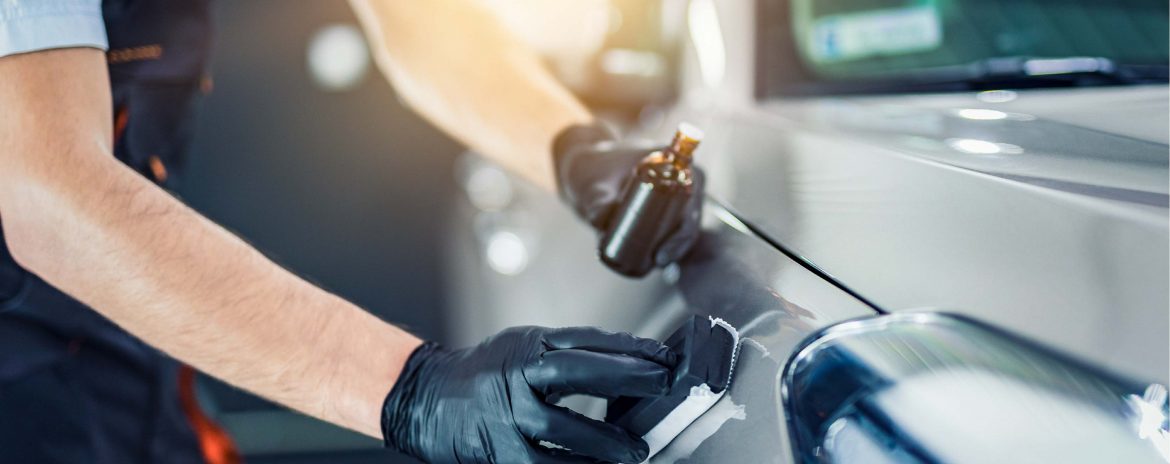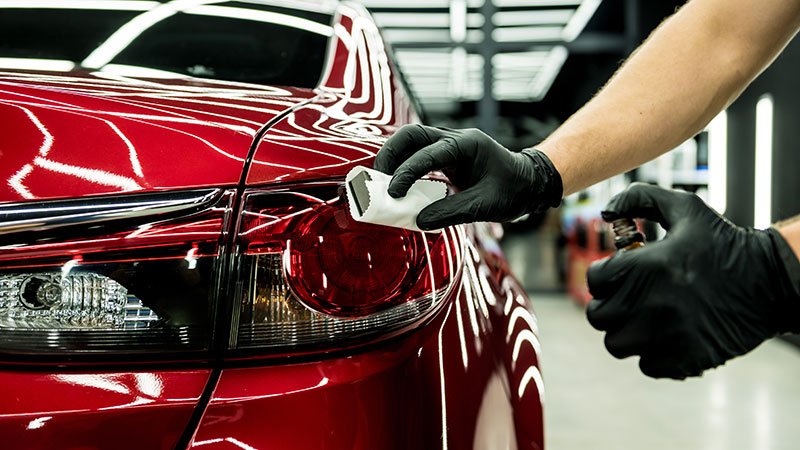Luxury Ceramic Coating Provided by Conforti Auto and Marine Detailing Experts
Luxury Ceramic Coating Provided by Conforti Auto and Marine Detailing Experts
Blog Article
How Describing Porcelain Coating Boosts the Longevity of Your Auto's Paint
Ceramic finishing has become an essential innovation in automotive outlining, providing a lasting solution for preserving the stability of your car's paint. By developing a safety layer that effectively defends against UV rays, chemical discolorations, and environmental impurities, this innovative finish not only improves the visual allure of the car but likewise adds to its overall durability. Recognizing the intricacies of exactly how ceramic layer works and its benefits over typical wax can provide useful understandings for car owners. What elements should you think about before making the investment?
What Is Ceramic Finishing?
Comprehending the safety benefits of ceramic covering begins with recognizing its structure and performance. Ceramic finishing is a liquid polymer put on the exterior surface areas of lorries, largely created to improve and safeguard automobile paint. The key part of this layer is silicon dioxide (SiO2), which is originated from all-natural materials like sand. This substance forms a strong chemical bond with the factory paint, developing a safety layer that is both resilient and hydrophobic.
The coating's application entails precise prep work of the lorry's surface, which must be complimentary from contaminants, scrapes, and flaws to make certain ideal attachment. When applied, the ceramic coating treatments to form an inflexible shield that can endure various ecological aspects, including UV rays, chemical discolorations, and oxidation.
Furthermore, ceramic layers are not merely surface-level treatments; they penetrate the paint to provide a lasting defense. This functionality extends the life-span of the lorry's looks while keeping its value gradually. Comprehending these fundamental elements of ceramic finish is vital for automobile owners seeking effective services for paint conservation and improvement.
Advantages of Ceramic Coating
The advantages of ceramic covering extend far beyond its fundamental protective functions. Unlike typical wax or sealants, ceramic coverings create a strong bond with the car's paint, permitting it to hold up against ecological hazards such as UV rays, acid rainfall, and road salt.
Furthermore, ceramic coatings offer hydrophobic properties, implying they push back water and impurities. This particular not just makes the automobile much easier to tidy yet likewise reduces the frequency of cleaning, conserving both time and effort for car proprietors. The glossy surface area produced by the finishing stops dust and crud from sticking, boosting the automobile's overall cleanliness.
Additionally, ceramic finishings improve the depth and clearness of the paint, offering cars a shiny surface that is visually striking. This visual improvement better contributes to preserving the auto's resale value, as a well-kept outside is a significant selling point for prospective buyers. In general, the advantages of ceramic coating make it a beneficial financial investment for anybody wanting to secure and boost their vehicle's paintwork.
Just How Ceramic Covering Functions

The layer's hydrophobic buildings fend off water and dust, avoiding the build-up of grime externally. This not only makes the automobile easier to clean yet additionally lowers the possibility of scrapes and swirl marks brought on by conventional cleaning approaches. In addition, the ceramic layer serves as a guard against UV rays, which can create fading and oxidation over time.
Once healed, the finishing shows amazing resistance to chemicals, including road salts, bird droppings, and tree sap, which can or else damage the paint. The long life of ceramic finishings can last for a number of years, depending upon factors such as maintenance and ecological conditions. Generally, the chemical bonding process of ceramic finishes gives a robust protection that keeps the integrity and appearance of a car's paintwork.
Comparing Ceramic Covering to Wax
Comparing ceramic finishing to typical wax reveals significant distinctions in performance and durability. While both products aim to shield a car's paint, their compositions and resilience established them apart. Wax, commonly made from all-natural carnauba or synthetic products, gives a short-lived shield that typically lasts just a few weeks to a few months, depending upon ecological conditions and maintenance routines.
In contrast, ceramic layers are advanced services composed of inorganic materials that bond chemically with the car's paint. This creates a robust, semi-permanent layer of protection that can withstand for a number of years. Because of this, ceramic layers offer superior resistance to UV rays, chemical spots, and physical abrasion, substantially lowering the threat of oxidation and fading.
Moreover, the hydrophobic homes of ceramic finishes make sure that water grains up and rolls off the surface area, making it harder for dirt and gunk to stick. This simplicity of cleansing is a remarkable benefit over wax, which can bring in dirt and call Click This Link for constant reapplication. Inevitably, for auto proprietors looking for resilient protection and boosted visual charm, ceramic finishes offer a more effective option Extra resources to typical wax products.
Maintenance Tips for Longevity
Appropriate maintenance is vital for making best use of the durability of a ceramic layer. Use a pH-balanced car hair shampoo to avoid degrading the covering, and avoid automatic cars and truck cleans with harsh brushes that can trigger micro-scratches.
To preserve the hydrophobic buildings of the ceramic layer, take into consideration applying a maintenance spray or booster particularly designed for ceramic coatings every few months. This will enhance the safety layer and enhance water beading.
Furthermore, prevent subjecting the covered surface area to extreme ecological problems whenever possible. Vehicle parking in shaded areas or making use of a car cover can stop UV damages and contamination from bird droppings, tree sap, or commercial results.
Last but not least, check the finish occasionally for indicators of wear or damages. If you notice a decline in hydrophobic habits, it might be time for an expert reapplication. By adhering to these maintenance suggestions, car owners can dramatically prolong the life and effectiveness of their ceramic coating, making certain that their car's paint continues to be secured and visually appealing for many years to come.
Verdict

Report this page